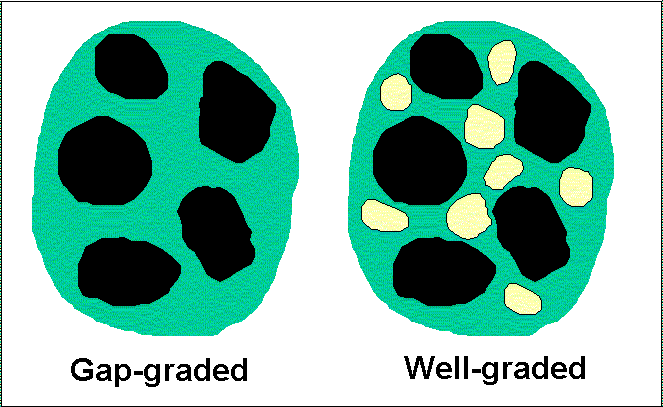Introduction
Rapid concrete pavement repairs have become common on many busy highways throughout North America. High early strength concrete is very useful for opening up concrete pavements to traffic earlier than conventional concrete mixtures. New pavements, full-depth repairs, and other patches can be completed and the roadway or runway opened/reopened faster than with normal or conventional mixes.
How to get high early strength
High early strength concrete (2500-3500 psi compressive in 24 hours) is usually accomplished using Type III high-early strength cement (see Table 1), high cement content (600-1000 lb/cu yd), and lower water-cement ratios (0.3 to 0.45 by weight). Super-plasticizers are also used to make the concrete mixture more workable during placement. Fly ash and ground granulated blast furnace slag (GGBFS) are sometimes used in the mix to partially replace some of the Type III cement, which can be very expensive. For more information on fly ash and ground granulated blast furnace slag, consult Portland Cement Association's publication Design and Control of Concrete Mixtures, EB001.13T.
Table 1. Types of Portland Cement.
| Type of portland cement |
Uses |
Blaine fineness, m2/kg |
| Type I |
general concrete construction |
370 |
| Type II |
concrete exposed to moderate sulfate action or when moderate heat of hydration required |
370 |
| Type III |
high concrete strength in short time span |
540 |
| Type IV |
suitable when low heat of hydration is necessary |
380 |
| Type V |
used when concrete is exposed to high sulfate action |
380 |
| White |
architectural purposes - when white or colored concrete/mortar is required |
490 |
Aggregate gradation uniformity will improve concrete strength, workability, and long-term durability. Intermediate size aggregates fill voids typically occupied by less dense cement paste and thereby optimize concrete density (see Figure 1).

Figure 1. Diagram showing how intermediate size aggregates fill spaces between larger coarse aggregates.
It is not recommended to use calcium chloride to achieve high early strength, but if it is used, do not use more than 2%. Flash set of the concrete is likely to occur with more than 2% CaCl, and oftentimes with any amount less than 2% CaCl. In general, the workability of the concrete mixture decreases greatly with CaCl.
Insulating blankets (or other insulation measures) can also be used in the first 24 hours to help strength gain by retaining the heat of hydration. Caution must be taken, though, to avoid thermal shock when the blankets are taken off. Thermal shock may cause premature cracking of the concrete.
Considerations in using high early strength mixes
Some concerns remain about the long-term durability of early-opening-to-traffic concrete repairs. This factor must be taken into account when designing reconstructed concrete pavements as well as concrete pavement repairs. In a few cases, early deterioration due to excessive shrinkage cracking or other environmental conditions has led to unsatisfactory performance of full-depth repairs and slab replacements. These distresses can be minimized by careful attention to and understanding of the effects of changes in mix design.
For more information on High Early Strength Concrete, consult ACPA's publication Fast-Track Concrete Pavements, TB004.02P.
To learn more, follow...
FATQ - What are the strength tests that can be performed on concrete specimens, and how do they relate to one another?
Fast-Track Concrete Fundamentals
Concrete Materials Fundamentals


